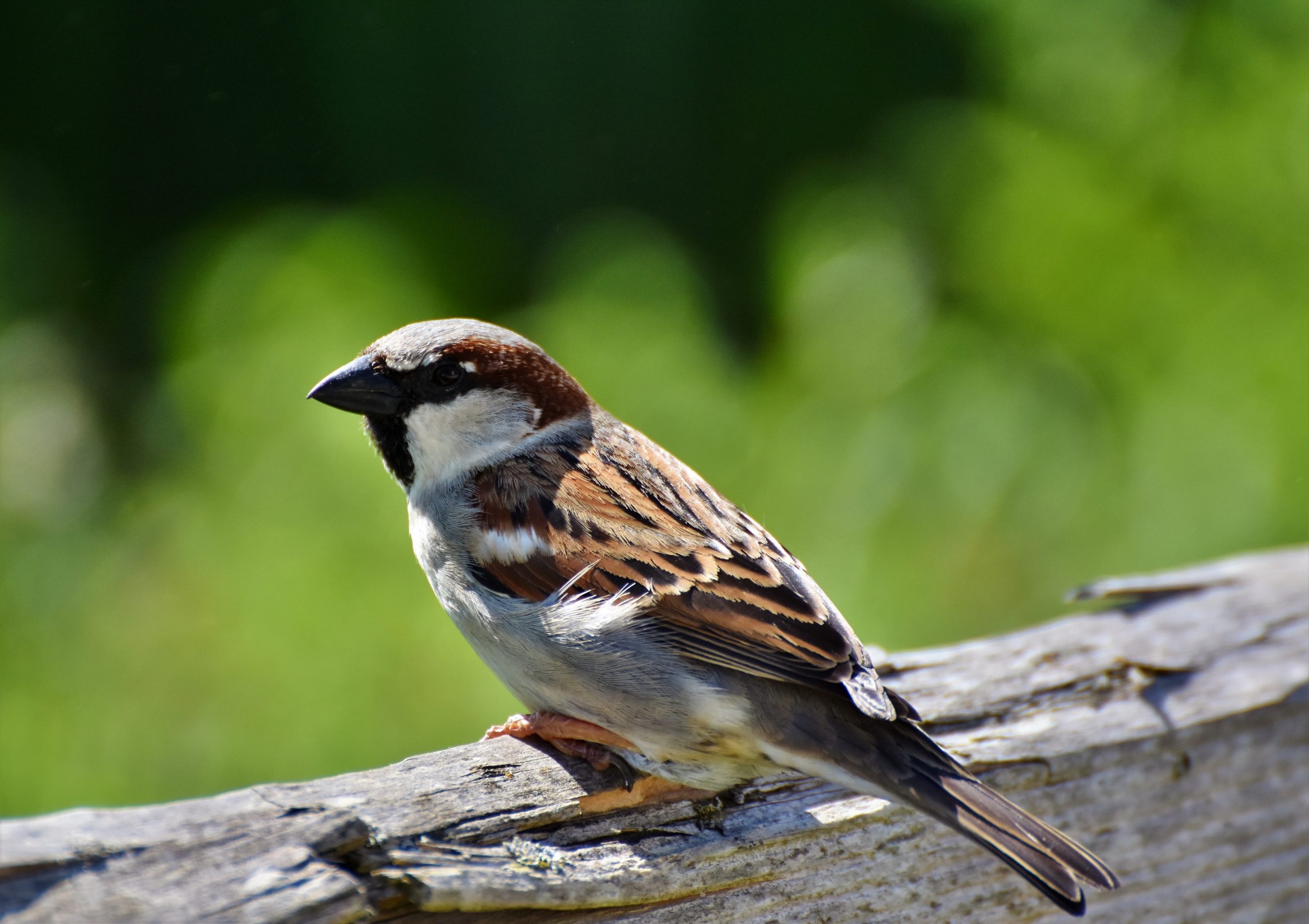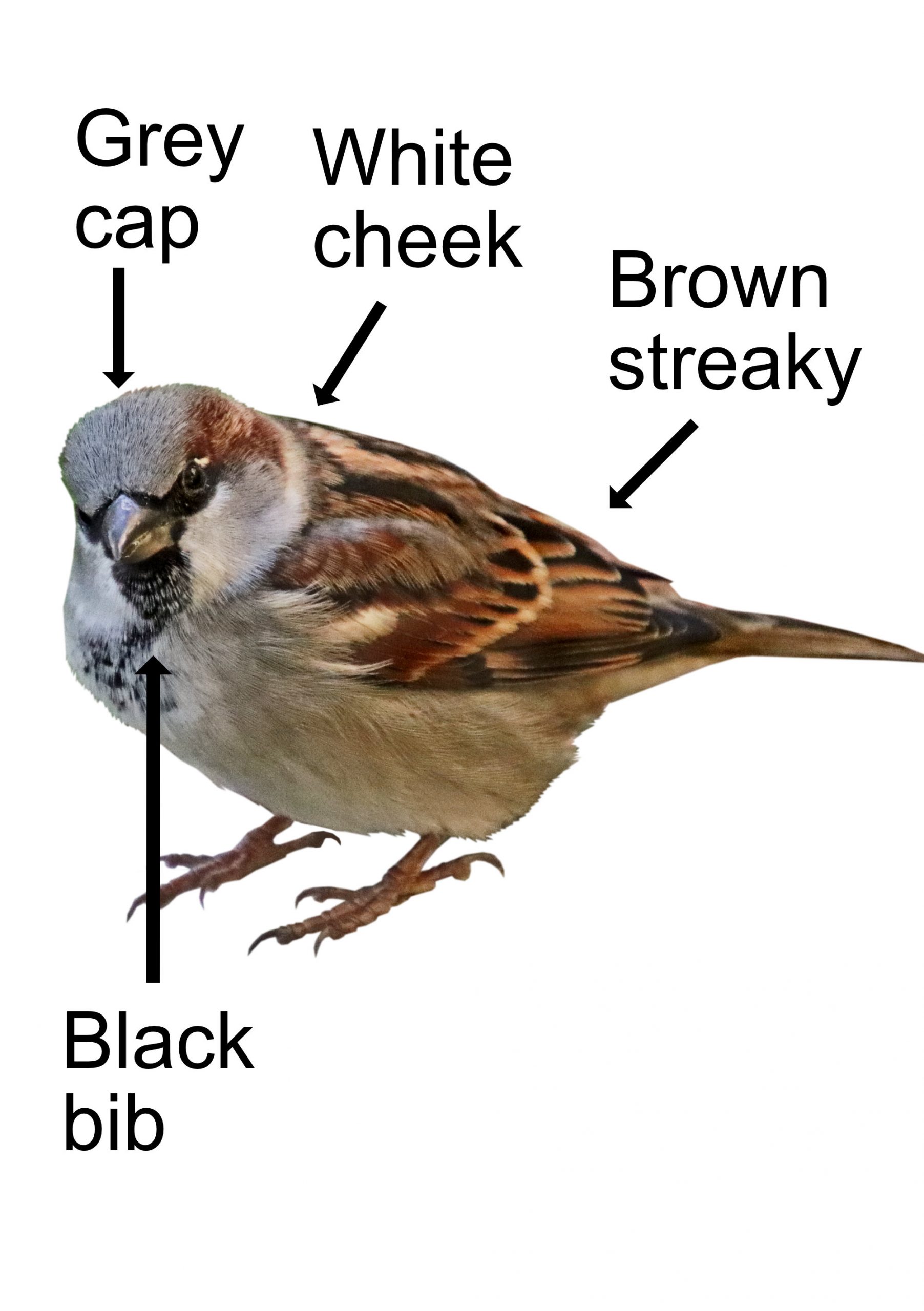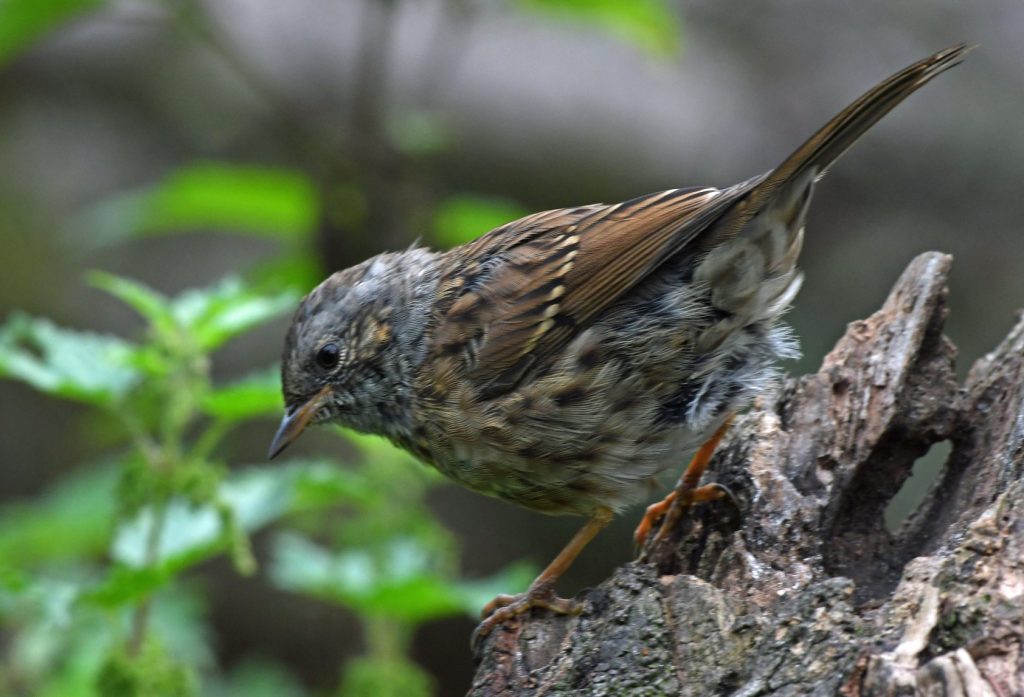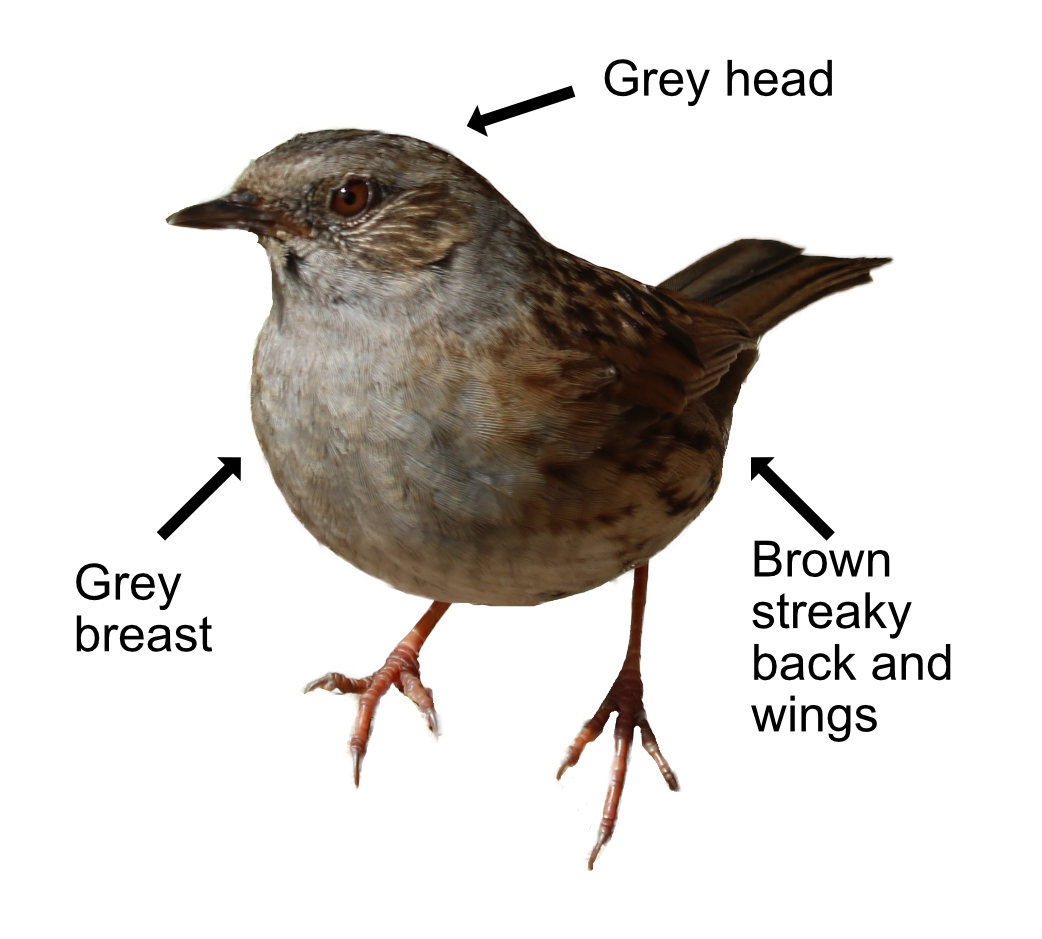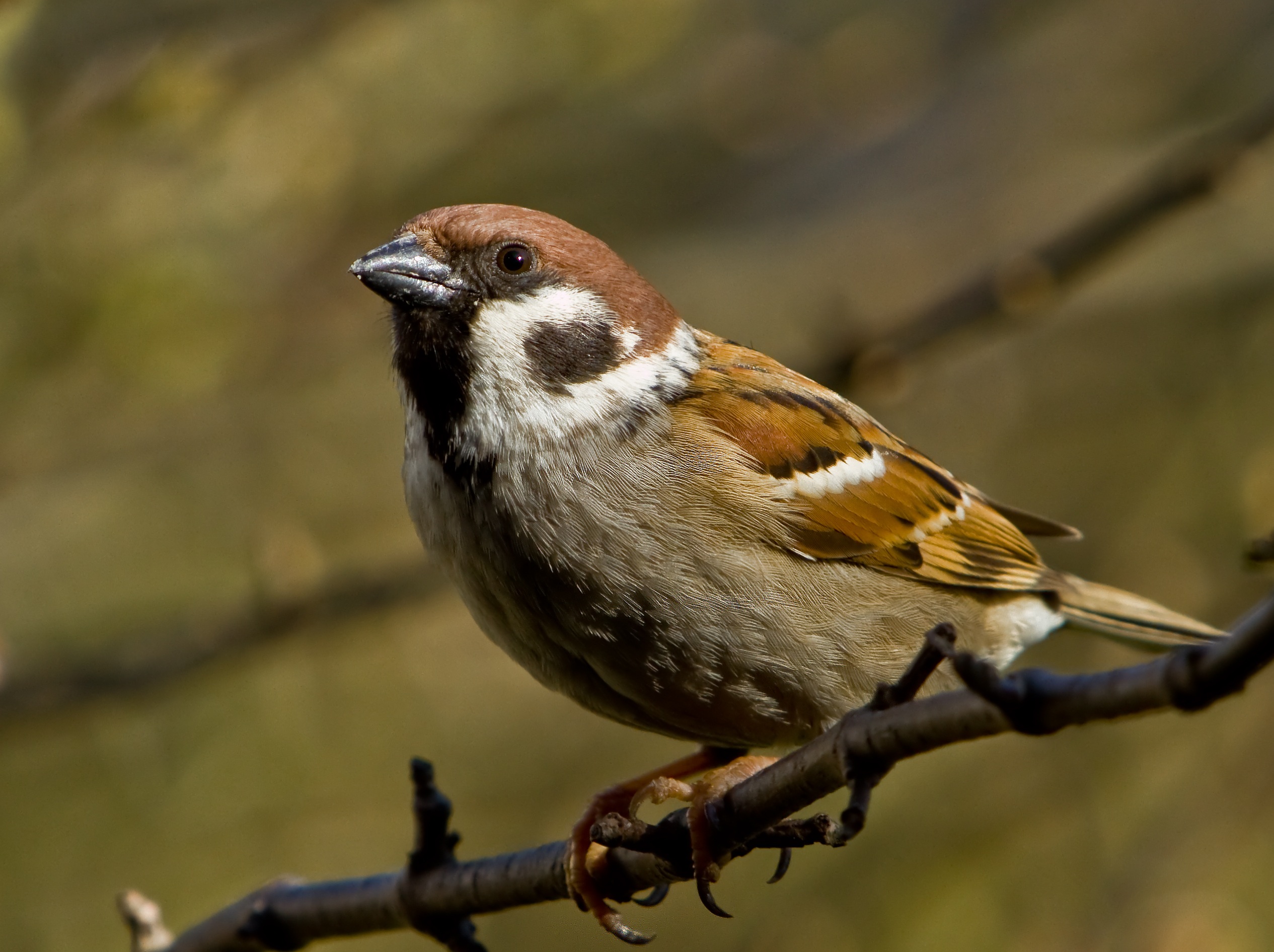
Often overlooked as 'just another sparrow', the Tree Sparrow is almost identical to a House Sparrow except without the grey cap. They are the scarce country cousin of the House Sparrow and can be found in open deciduous woodland or farmland rather than towns and gardens. They are shyer than House Sparrows and rarely associate with people, although in continental Europe they are the complete opposite and often nest in buildings just like House Sparrows do here! To further confuse you, they will all travel together in mixed flocks during the winter. They are very sociable, like the House Sparrow, and chirrup merrily away in flocks.
The Tree Sparrow is slightly smaller than a House Sparrow and more active, with its tail often cocked. It has an all chestnut crown, a black spot on its pale cheeks, a small black bib and pale underparts. Their chirrup is like a House Sparrow's, so telling them apart by call is hard. Experts say it is slightly more varied but you would need specialist sound equipment to tell. Thankfully, their flight call is a more distinctive "tek tek".
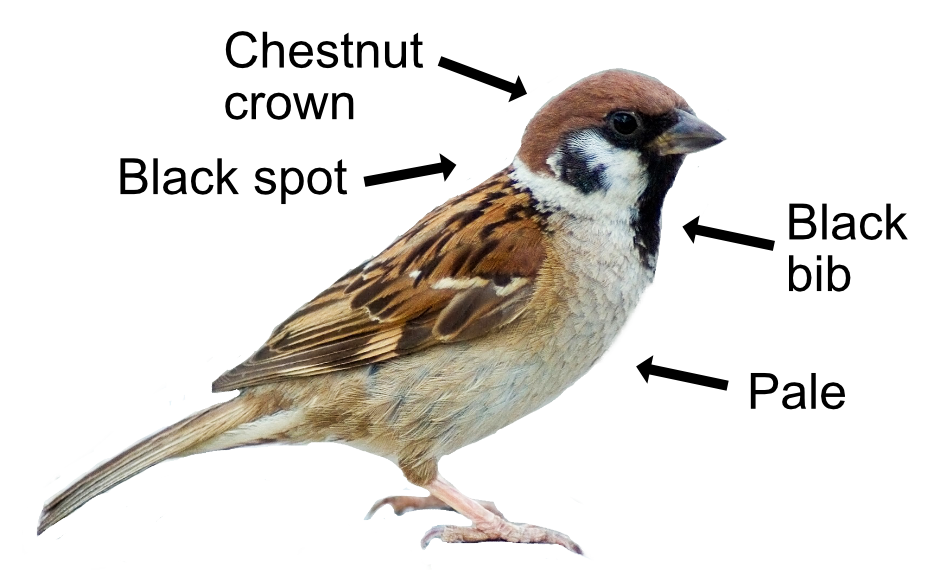
Tree Sparrows eat small insects, like aphids, and seeds. They feed in bushes, trees and on the ground, usually in groups.
The breeding season takes place from May to mid-August. They nest in colonies using holes in trees and buildings, often occupying the same hole year after year. The messy nest is made using twigs and grass. Both parents build the nest and incubate the 5 eggs which hatch after 11 days. For their first two weeks, the youngsters are fed on a high protein diet made up entirely of insects and spiders. The young can fly 15 days later and are fully independent after a further two weeks. They then disperse but don't travel far. They can raise up to three broods.
The Tree Sparrow is mainly resident with 200,000 pairs and can be found from the Midlands northwards and eastwards. A few continental birds overwinter here. They tend not to travel far which makes their colonisation progress slow. However, when numbers in an area build up they will sometimes 'erupt' to populate a new area. Tree Sparrows are seriously under threat, and are listed as a Red species of conservation concern. Their numbers have declined by 93% between 1970 and 2008. This could be due to changes in agricultural practices resulting in fewer food sources being available on farmland. More recent survey data is a bit more encouraging, suggesting that numbers may have started to increase again, albeit from a very low point.
Their Latin name is 'passer montanus' where 'passer' means 'sparrow' and 'motanus' means 'of the mountains' which is a bit wrong as they don't like mountains much at all. Field sparrow would have been closer. The English name comes from its preference of tree holes for nesting.
